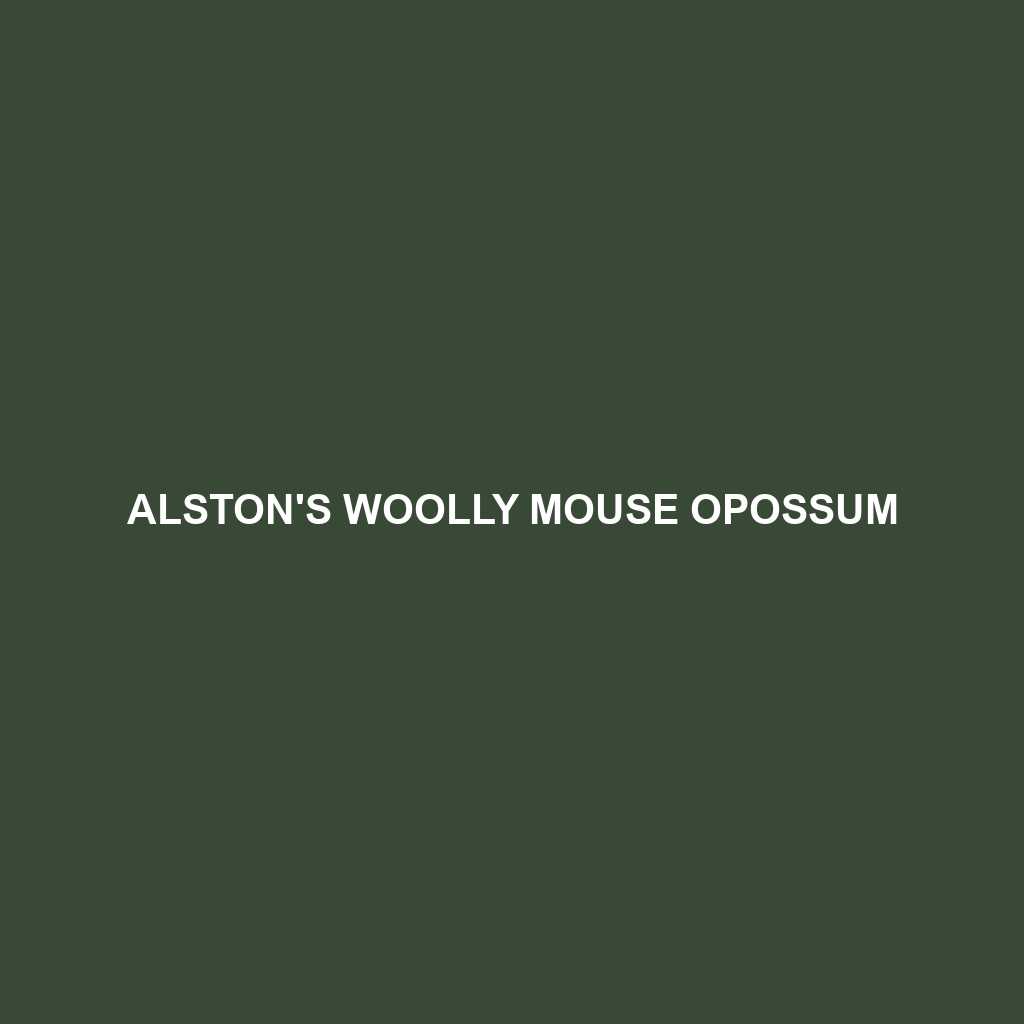Alston’s Woolly Mouse Opossum: A Detailed Description
Alston’s Woolly Mouse Opossum (Micoureus alstoni) is a small, nocturnal marsupial native to Central and South America. Known for its soft, woolly fur, this elusive creature inhabits tropical forests and plays a vital role in its ecosystem. Despite its diminutive size, this opossum boasts a range of fascinating attributes, from its physical characteristics to its unique behaviors and ecological significance.
Physical Characteristics:
Size: Alston’s Woolly Mouse Opossum is a small marsupial, typically measuring between 10 to 15 cm (4 to 6 inches) in body length, with a tail that can be as long or slightly longer than its body, adding another 13 to 20 cm (5 to 8 inches). They usually weigh around 30 to 50 grams (1 to 1.75 ounces).
Coloration: This opossum features a dense, woolly fur that is predominantly grayish-brown on the dorsal side, while the ventral side is lighter, often white or cream-colored. The tail is usually bicolored, with a darker upper side and a lighter underside.
Special Features: One of the most distinctive features of Alston’s Woolly Mouse Opossum is its prehensile tail, which is adept at grasping and wrapping around branches. This adaptation aids in its arboreal lifestyle. Additionally, it has large, protruding eyes adapted for nocturnal vision and sensitive whiskers that help it navigate in the dark.
Behaviors:
Social Interactions: Alston’s Woolly Mouse Opossum is generally solitary, except during the breeding season. Males and females come together to mate, and females care for the young in their pouch until they are sufficiently developed.
Feeding Habits: This opossum is omnivorous, with a diet that includes fruits, insects, small vertebrates, and occasionally nectar. Its varied diet helps it adapt to different food availabilities in its habitat.
Ecological Roles: As both a predator and prey, Alston’s Woolly Mouse Opossum plays a crucial role in maintaining the balance of its ecosystem. By consuming insects, it helps control pest populations, and as prey, it provides sustenance for larger predators.
Habitat and Adaptations:
Habitats: Alston’s Woolly Mouse Opossum is primarily found in tropical rainforests, often inhabiting the understory and lower canopy layers. It prefers environments with dense foliage, which provide ample cover and food resources.
Adaptations: Its prehensile tail and dexterous limbs are well-adapted for an arboreal lifestyle, allowing it to navigate through the forest canopy with ease. Its nocturnal nature helps it avoid many daytime predators and exploit nighttime food resources.
Conservation Status:
Current Status: The conservation status of Alston’s Woolly Mouse Opossum is currently listed as Least Concern by the IUCN Red List. However, habitat destruction due to deforestation poses a potential threat to its population.
Conservation Efforts: Efforts to conserve tropical forest habitats indirectly benefit this species. Protected areas and sustainable forestry practices are crucial for ensuring its long-term survival.
Fun Facts:
Marsupial Pouch: Like other marsupials, female Alston’s Woolly Mouse Opossums have a pouch where they rear their young. The young, called joeys, continue to develop in the safety of the pouch after birth.
Nocturnal Navigation: Their large eyes and sensitive whiskers are perfect tools for navigating the dense forest under the cover of darkness, making them highly efficient nocturnal foragers.
Environmental Indicator: Due to their sensitivity to environmental changes, Alston’s Woolly Mouse Opossums can serve as indicators of ecosystem health, providing valuable information for conservationists.
By understanding and appreciating the unique characteristics and ecological importance of Alston’s Woolly Mouse Opossum, we can better advocate for the preservation of its natural habitat and ensure this species continues to thrive.
